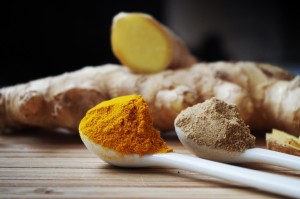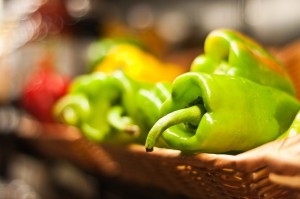Anti-inflammatory foods
Here’s 4 anti-inflammatory foods and easy ways to reduce inflammation. Anti-inflammatory foods aren’t always easy include in our daily diet so we’ve picked out the best swaps to make as well as pro-tips like avoiding sugar… and gluten and dairy too!
Is sugar free anti-inflammatory? What’s inflammation exactly? Follow us as we answer these questions here.
Osteopathy and nutrition: ligament sprains and muscles strains produce inflammation. So WHAT CAN WE ACTUALLY EAT to support our body’s in-built healing process?
Here are 4 anti-inflammatory foods to eat for their natural anti-inflammatory properties. Our bodies produce inflammation or release inflammatory markers a response to stress or ‘foreign invaders’.
4 Foods to Relieve Pain
1. JERF. And if you can’t eat enough fruit and vegetable daily consider taking them like this. Just eat real food Avoid process food – hydrogenated oils ++sugar & salt -contribute to inflammation / joint pain.
4 anti-inflammatory foods
PRO-TIP: If we just eat real food rather than processed food we’re over half way there! Anti-inflammatory food doesn’t come out of a crisp packet. Foods that are as close to their natural form as possible are really the best kinds of anti-inflammatory foods. Even if it’s not coming from the farm directly, we can try to reduce pesticide and chemical fertiliser content. Follow us for tips on how here.
Swap this for this. Ketchup and other condiments for real spices or real foods, e.g. turmeric, Liposomal Curcumin
Ginger, ground pepper corns, cayenne pepper, tamarind etc…
PROTIP:Liposomal Curcumin /Resveratrol can remain in the blood for longer, at a higher concentration. And unlike many commercial supplements in varied delivery systems, liposomal delivery is exceedingly safe. Liposomal Curcumin/Resveratrol is made with only natural non-GMO ingredients
2. Inflammatory markers:
C-reactive protein (CRP) Especially with high CRP levels, you want to do everything possible to reduce inflammation. Turmeric (and probiotics according to studies)
Acute inflammation is your body’s appropriate response to infection or trauma. You’ve experienced a sore throat, rash, hives, or a sprained ankle.
But inflammation should do its job and then leave. With allergies, rheumatoid arthritis, autoimmune disease, or asthma, an overactive immune response and chronic inflammation can slowly wreak havoc. Eventually this can lead to illness and rapid ageing. Your CRP levels should be less than one. Anything higher provides a giant warning sign that you have hidden inflammation.
4 Foods Relieve Pain
3. Choose high quality protein sources. We cover plant based protein sources here. If you’re going for fish remember it’s 2-3 portions weekly and see the golden rule. For eggs, fish, poultry and meat remember the golden rule: pastured, free-range or grass fed. Why? Because we are what we eat and what what we eat eats!
4 Foods Relieve Pain
4. Alcohol — 1 ounce / 1oz distilled spirits daily. 5 oz wine or 12 oz beer for women and double for men. Soft drinks — swap soft drinks for unsweetened ice tea. Cheers!
Manuka honey vs raw honey
Manuka honey is simply honey made from one specific plant – the manuka tree. This tree is found in New Zealand. Consumption of manuka honey may offer antibacterial benefits for the health of the digestive system which sugar alone cannot, but research is limited for this.
Raw Honey Health Benefits
Raw honey is honey that hasn’t undergone any heat processing. The resulting ‘raw’ or uncooked honey product leaves the vast majority of bio-active compounds intact.
What’s in raw honey?
Raw honey will contain a much greater variety of bio-active compounds than regular honey. Often these are in a much greater quantity than even manuka honey.
As raw honey can be made from any plant, the quantity and variety of plant derived compounds is very variable. However, bee derived compounds will be much more consistent in their presence and quantity. One such compound is a peptide called bee-defensin, which exists in 2 forms (bee defensin-1 and bee defensin-2), and is a natural part of the bee-hives immune system. This peptide is a known antibacterial agent. Consuming bee-defensin is thought to help promote digestive system health and the immune system, although conclusive evidence is limited.
4 Foods Relieve Pain: Other compounds found in raw honey include a number of polyphenols. For example: caffeic acid and catechins (which are also found in green tea). These polyphenols are known to exert antioxidant properties on the body.
These polyphenols can help the body protect against a range of ailments which are associated with oxidative damage. A number of these compounds will also be in manuka honey, and possibly generic honey. However, they’ll generally be found in higher quantities in raw honey.
NB. The high sugar content of all honey, although it may contain beneficial compounds that can promote our health, will still have an impact on our levels of insulin.
DID YOU KNOW? Our joints and our gut – therefore also our brain! – function best when we eat a diet rich in whole grains. But what about gluten – does this cause inflammation in our gut? —– FAST FACT -> You can find and eat wholegrain gluten free food so if you’re following a gluten free diet you don’t have to miss out on the healthful benefits of wholegrains!




